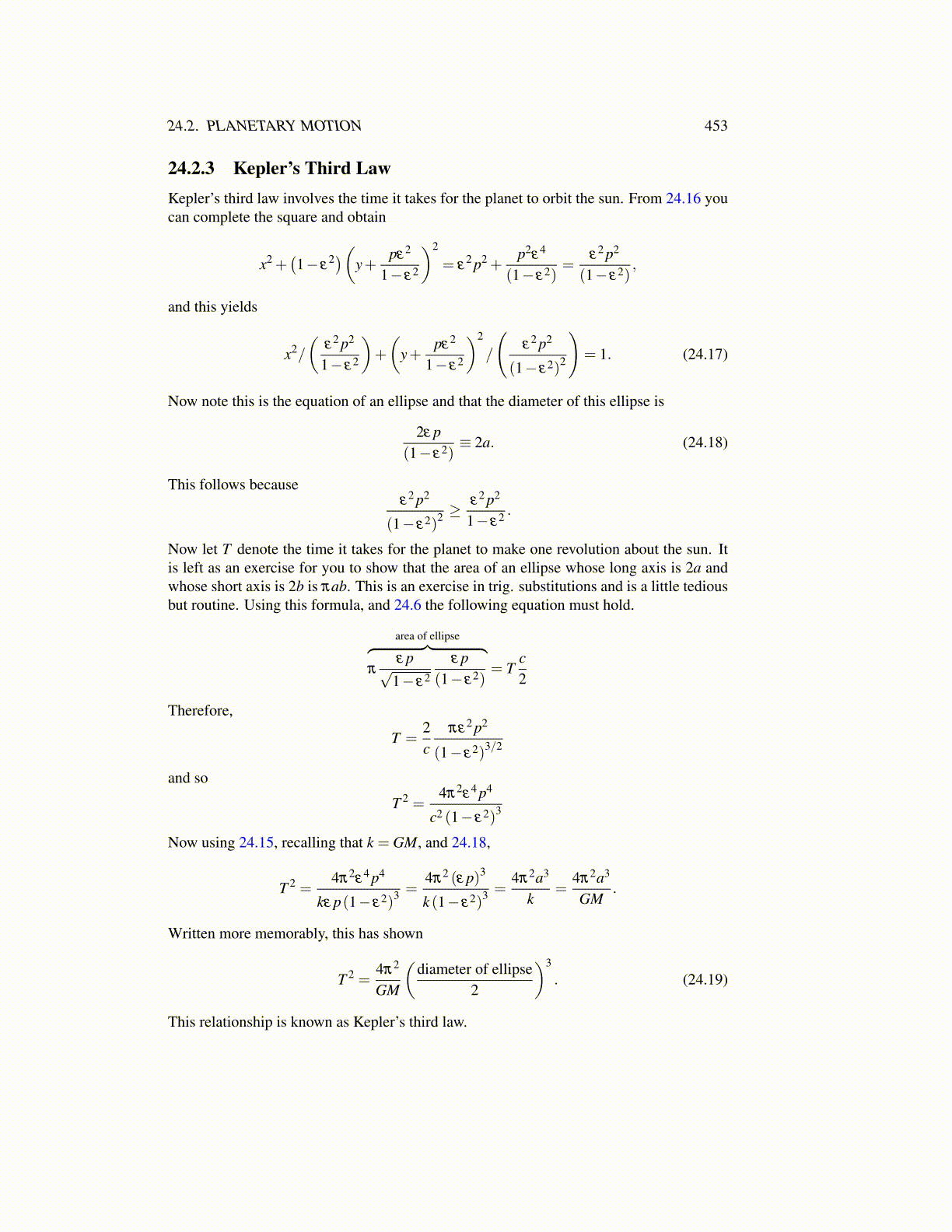
24.2. PLANETARY MOTION 453
24.2.3 Kepler’s Third LawKepler’s third law involves the time it takes for the planet to orbit the sun. From 24.16 youcan complete the square and obtain
x2 +(1− ε
2)(y+pε2
1− ε2
)2
= ε2 p2 +
p2ε4
(1− ε2)=
ε2 p2
(1− ε2),
and this yields
x2/
(ε2 p2
1− ε2
)+
(y+
pε2
1− ε2
)2
/
(ε2 p2
(1− ε2)2
)= 1. (24.17)
Now note this is the equation of an ellipse and that the diameter of this ellipse is
2ε p(1− ε2)
≡ 2a. (24.18)
This follows becauseε2 p2
(1− ε2)2 ≥ε2 p2
1− ε2 .
Now let T denote the time it takes for the planet to make one revolution about the sun. Itis left as an exercise for you to show that the area of an ellipse whose long axis is 2a andwhose short axis is 2b is πab. This is an exercise in trig. substitutions and is a little tediousbut routine. Using this formula, and 24.6 the following equation must hold.
area of ellipse︷ ︸︸ ︷π
ε p√1− ε2
ε p(1− ε2)
= Tc2
Therefore,
T =2c
πε2 p2
(1− ε2)3/2
and so
T 2 =4π2ε4 p4
c2 (1− ε2)3
Now using 24.15, recalling that k = GM, and 24.18,
T 2 =4π2ε4 p4
kε p(1− ε2)3 =4π2 (ε p)3
k (1− ε2)3 =4π2a3
k=
4π2a3
GM.
Written more memorably, this has shown
T 2 =4π2
GM
(diameter of ellipse
2
)3
. (24.19)
This relationship is known as Kepler’s third law.